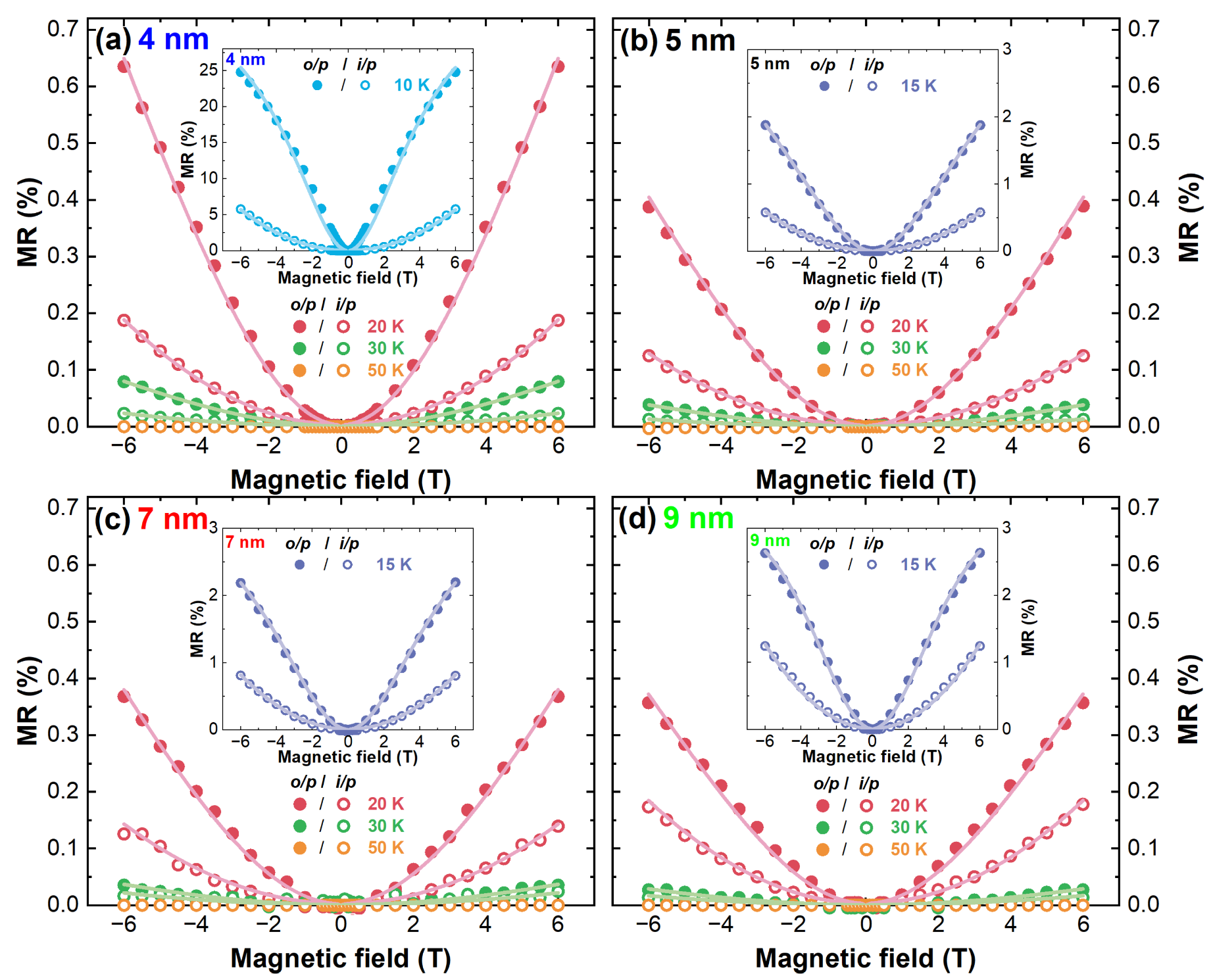- Home
- Research
- Quantum Detection
- Research results
- Analysis of Low-Temperature Magnetotransport Properties of NbN Thin Films Grown by Atomic Layer Deposition
Analysis of Low-Temperature Magnetotransport Properties of NbN Thin Films Grown by Atomic Layer Deposition

11.09.2023
During the last two decades, superconducting nanowire single photon detectors (SNPD) are structured from type-II superconducting thin films. However, there are still fundamental physics questions of how the “hot-spot” detection mechanism in SNSPDs after absorption of single photons works microscopically which are not answered so far. Instead, macroscopic models were applied for technological progress. Finding a microscopic model from the theory side is a challenging task due to the intertwined complexity of the various involved types of excitations in superconducting devices for IR single photon detection. Finally, the researchers wish to relate the “hot spot” formation with photon-induced and with magnetic-field-induced vortex-antivortex pair formation. The study focused on the analysis of interaction and localisation effects on electronic disorder in unstructured NbN in the normal state in temperatures that ranged from 50 K down to the superconducting transition temperature. By modelling the temperature and magnetic field dependence of the MR data, the scientists extracted the temperature-dependent Coulomb interaction constants, spin-orbit scattering energy, and valley degeneracy factor.
The operating region of the SNSPDs in present measuring systems is typically operated very close to critical current which introduces huge dark count. Magnetoconductivity study on NbN enables to broaden the operating regime of SNSPDs by choosing the operational parameters for a specific wavelength by tweaking the critical region of superconducting NbN with applied magnetic field and with applied current during the formation of “hot-spot”. The researchers expect that vortices induced by an external magnetic field act as tunable additional players for the photon-induced vortex-antivortex pairs and their respective movement. This work brings the team a step further towards using the magnetic field as an additional “tuning parameter” to increase sensitivity of SNSPDs mainly for single photons with large wavelength.
